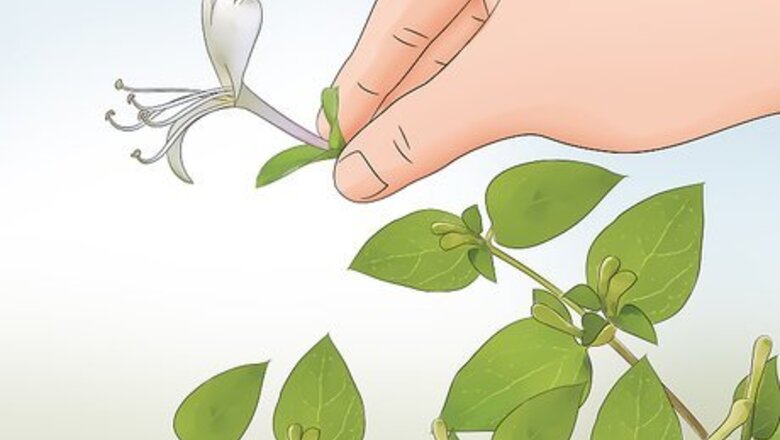
views
- Pick a flower below the first set of leaves and squeeze the base of the tip to access the stem near the top of the flower.
- You can add honeysuckle to salads, eat the berries on their own, or brew honeysuckle tea.
- There are a variety of different honeysuckle species out there, and not all of them are safe or digestible so double-check that you’ve got an edible variety before eating it.
Tasting the Nectar
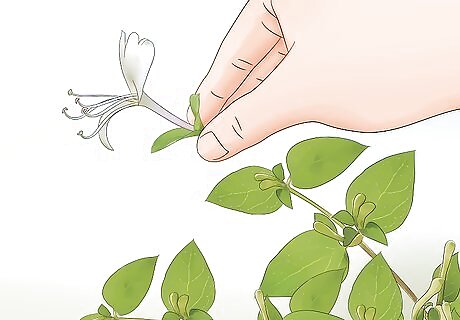
Pick 1-2 flowers just below the first set of leaves. You can even pick the flowers off above this point. Try not to pull the flowers off, as it can pull the nectar out without you being able to reach it. Instead, pinch the stem off. Most varieties of honeysuckle have edible nectar, but never suck the nectar if you're not sure. Similarly, many times the berries or flowers are toxic, so don't eat those parts of the plants without knowing the type of honeysuckle you have.
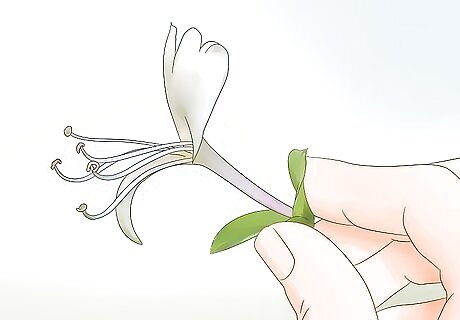
Squeeze your fingernails through the bottom tip of the bloom. Grab the bloom at the very bottom tip just before you get to the stem. Use your fingernails to break through the flower on both sides but not the stem underneath. Hold on to the stem tightly. You can also just pinch the end of the flower firmly.
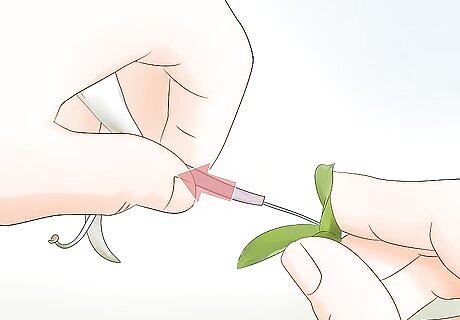
Pull the stem while you hold on to the flower. Pinch the bottom of the flower just above the point you just broke through. Pull down on the stem slowly. This will draw the style of the flower out through the bottom, gathering up the nectar. Be gentle, as you don't want to pull the stem all the way out. The style is one of the skinny pieces sticking out of the middle of the flower. The piece on the end of the style gathers the nectar when you pull it down through the middle of the flower.

Touch the bead of nectar to your tongue for a fragrant flavor. Once the stem is mostly out, you should see a small bit of nectar at the base of the flower. Lightly tap it on your tongue to get a taste. You can also lick the style that you pulled out the bottom.
Using Honeysuckle in Foods
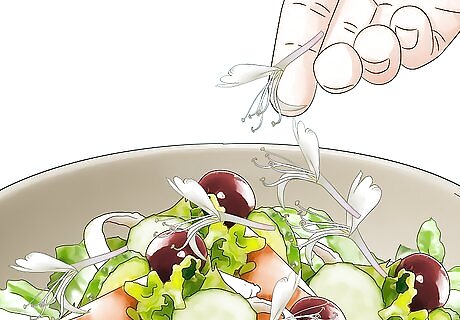
Add edible honeysuckle flowers to your salads. Snip or pinch off the blooms at the stem. Swirl them in a bowl of water to rinse them and rid them of any bugs and dirt. Let them air dry on a paper towel. Then, you can use them to add a beautiful addition to any salad. Make sure the variety of honeysuckle you're using is edible! Many varieties are not edible. Try Lonicera japonica for an edible flower. Lonicera affinis also has edible flowers.
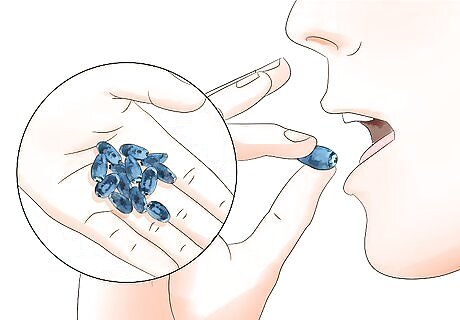
Eat edible berries raw like you would blueberries. Some honeysuckle berries are edible, though you must be careful to only eat the edible varieties. Some look like long, oblong blueberries, for instance. Wash the berries off and eat them by the handful or in salads. One of the best varieties for fruit is the Lonicera caerulea. You can eat these by the handful. Other varieties have edible fruits, but you should be cautious how many you eat at a time to see how they affect you. Varieties with edible fruits include Lonicera affinis, Lonicera angustifolia, Lonicera caprifolium , Lonicera chrysanthemum , Lonicera Kamchatka, Lonicera periclymenum, Lonicera ciliosa, Lonicera hispidula, Lonicera villosa solonis , Lonicera utahensis, and Lonicera villosa.
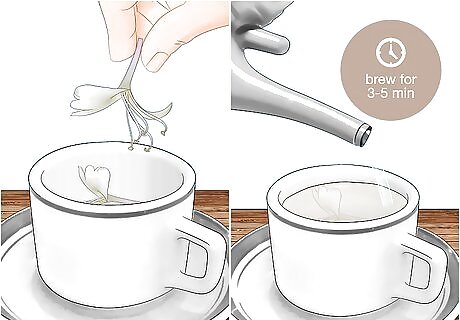
Brew the flowers as a tea for a floral flavor. Drop 4-5 clean flowers in a mug and pour hot water over them. Let them brew for 3-5 minutes, and then sip on the brew. A good variety for this is Lonicera caerulea. Make sure to only use edible varieties.
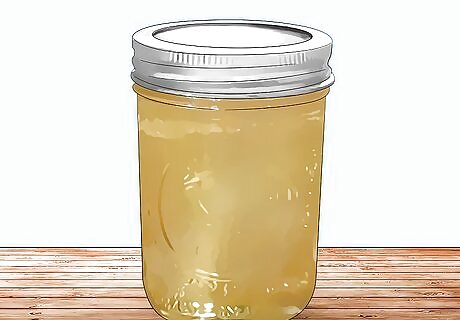
Make honeysuckle jelly with edible flowers. Pick 4 cups (about 100 grams) of golden honeysuckle flowers (not the white blooms). Submerge the flowers in a clean bowl of water and swirl them around, picking out anything that floats to the top. Drain the water. Pour the flowers into a medium-sized pot and add 4.5 cups (1.1 L) of water. Bring the mixture to a rolling boil, then take it off the heat, letting it sit for 2 hours. Strain the flowers out, reserving the water in a pot. To make the jelly, add the juice of 1 large lemon and 1.75 ounces (50 g) of fruit pectin after you've strained the flowers out. Boil the mixture for 1 minute, stirring often, before adding 4.5 cups (900 g) of sugar to the pot. Stir until the sugar dissolves and let it boil for 1-2 minutes. Once the jelly is done, pour it into clean jars. Keep it in the refrigerator for up to a month. You can also can it if you want it to be shelf-stable. Make sure to use an edible variety of flower, such as Lonicera caerulea or Lonicera japonica.
Finding Honeysuckle
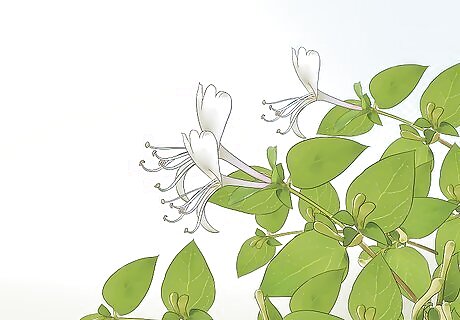
Look for abundant vines in the wild. Honeysuckle is an aggressive vine, meaning it can quickly take over large open areas, pushing out other plants. The most common form of honeysuckle in the United States, Lonicera japonica, has oblong medium-green leaves with points on each end. Honeysuckle only blooms for 2-3 months out the year in the summer, so the rest of the year you have to identify it by the leaves.
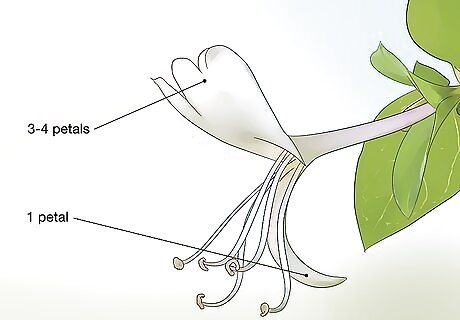
Check for the characteristic shape of the flower. Typically, the blooms of honeysuckle have a single petal on one side of the flower with 3-4 petals directly across on the other side of the flower, almost like a bird's foot. The petals of many honeysuckle varieties are long and skinny and curl back toward the base of the flower. They also have a long tube forming the base of the flower. You'll also see several skinny, string-like pieces sticking out of the middle of the flowers, which are the reproductive parts. Trumpet flowers are a variety of honeysuckle, and they mainly have a long tubular flower in orange or pink. However, they aren't edible.

Avoid black berries on vines with white and yellow flowers. This species, Lonicera japonica, is actually an invasive one from Japan, but it's one of the most common varieties in the United States. You can eat the nectar from its flowers and use the flowers to make syrups or jelly. However, do not eat the berries from this vine. Lonicera affinis has a similar look but slightly longer leaves, and it is another edible variety. Another variety, Lonicera caerulea, has long white flowers with short petals that curl toward the center of the flower. The edible berries are much larger than other varieties, about the size of a small blackberry, and they're blue in color.












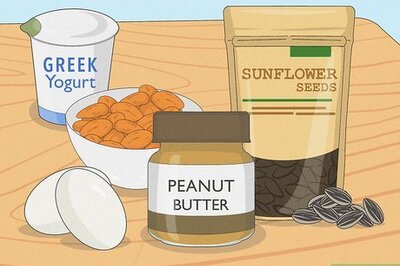

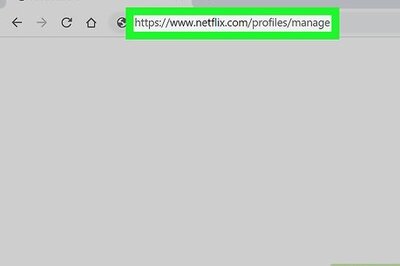



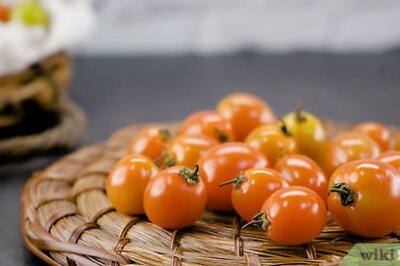

Comments
0 comment